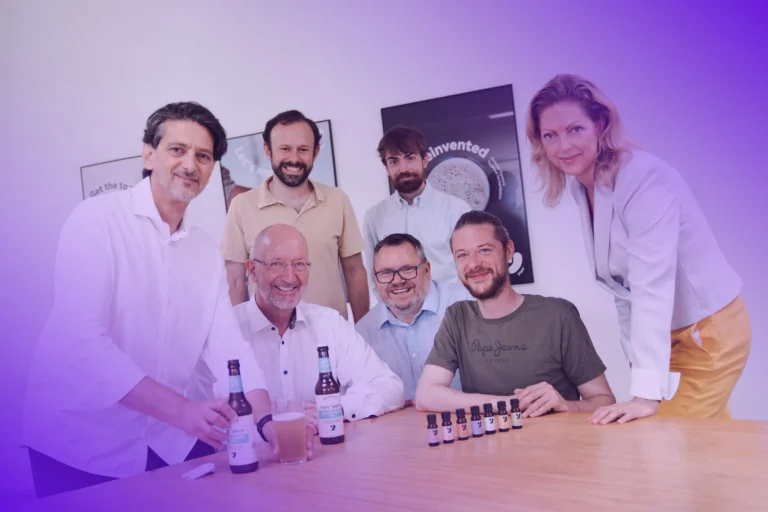

Fraunhofer unlocks rapeseed protein for burgers, pasta and chicken feed
Researchers at the Fraunhofer Center for Chemical-Biotechnological Processes (CBP) in Leuna, Germany, have developed a method to transform rapeseed into high-value protein ingredients suitable for both human and animal nutrition. The breakthrough, achieved using the institute’s proprietary EthaNa process, could offer a domestic alternative to imported soy and diversify the portfolio of sustainable protein sources available to the food and feed industries.
Plant proteins from soy, peas, fungi and algae have already made their way into a wide range of alternative meat, dairy and seafood products. But rapeseed, despite being widely cultivated in Europe, has so far remained underutilized as a protein source. The reason lies in the conventional oil pressing process, which denatures the proteins and leaves behind a meal that contains unwanted fibers and bitter compounds, making it unsuitable for food applications and less attractive for animal feed.
Fraunhofer researchers have shown that these barriers can be overcome. Their EthaNa (ethanolic native extraction) technology gently processes de-hulled rapeseed kernels at temperatures no higher than 70°C and under ambient pressure, preserving the proteins’ natural structure. This results in a rapeseed kernel concentrate with a protein content above 50% and a residual oil content below 5%. Crucially, the concentrate can be applied in a variety of ways, from vegan burger patties and pasta to poultry feed.
“Due to the poor solubility of rapeseed oil in ethanol, the oil is displaced from the seeds so that it is directly available as free oil and does not have to be extracted from the solvent at high temperatures,” explains Dr Robert Hartmann, Head of the Biomass Fractionation Group at Fraunhofer CBP. He adds that fatty acids and phosphorus-containing molecules dissolve well in ethanol, yielding a pre-refined oil without additional processing. The process is designed holistically. A de-hulling system upstream of the EthaNa plant removes the husks before extraction, reducing bitterness and improving quality. The result is four distinct fractions: high-quality rapeseed oil, a protein-rich kernel concentrate, hulls that can serve as insulation material, and ethanol extracts containing compounds such as glucosinolates, sinapinic acid and phospholipids, which can be used in applications ranging from plant protection to cosmetics.
For the past two years, a pilot plant in Leuna has been running the EthaNa process while researchers fine-tuned conditions. In parallel, the Like-A-Pro project tested rapeseed kernel concentrate alongside six other alternative proteins in foods such as fish sticks, minced meat substitutes, pasta and burger patties. Evaluations covered not only taste and texture but also water absorption and emulsion stability. “It formed stable emulsions in combination with other ingredients, and the patties impressed us with their good consistency, pleasant bite and good mouthfeel,” says Hartmann. Analyses also confirmed that the concentrate offers a favorable amino acid profile, with higher levels of essential amino acids than conventional rapeseed meal and even soy protein.
Beyond food applications, Fraunhofer’s rapeseed concentrate has demonstrated strong potential in animal nutrition. In the “NAPF – new high-protein rapeseed feed” project – 40kg of concentrate produced at CBP were supplied to partners for feeding trials at the University of Hohenheim. Broiler chicks fed with the rapeseed concentrate grew from 43g to 1,000g within 21 days, showing performance comparable to soy-based diets. Just as important as protein content is digestibility. Tests at Hohenheim revealed that rapeseed kernel concentrate was more digestible than conventional rapeseed meal. Supplementing the feed with the enzyme phytase further improved absorption by breaking down phytic acid and making phosphorus bioavailable. “The enzyme breaks down phytic acids and releases phosphates, which become bioavailable and subsequently improve protein absorption in the organism,” Hartmann explains.
With a protein content exceeding 50%, the concentrate reaches the level of soy extraction meal. Given that most feed soy is imported from South America – where its cultivation contributes to deforestation – rapeseed-based protein could help reduce Europe’s reliance on imports and lower the environmental impact of poultry farming. By producing multiple valuable outputs from a single crop, the EthaNa process improves both the sustainability and profitability of rapeseed cultivation. The oil meets pre-refining quality, the protein concentrate can replace soy in food and feed, the hulls have industrial uses, and the ethanol extracts yield compounds with commercial value. This full utilization model reflects a broader shift toward circular approaches in agriculture and bioprocessing.
The researchers believe their work could make a significant contribution to Europe’s protein independence while promoting regional, plant-based food systems. By tapping into a crop already widely grown across the continent, Fraunhofer’s approach offers a realistic pathway to diversifying protein sources without expanding agricultural land use.
If you have any questions or would like to get in touch with us, please email info@futureofproteinproduction.com


-p-800.jpg)



